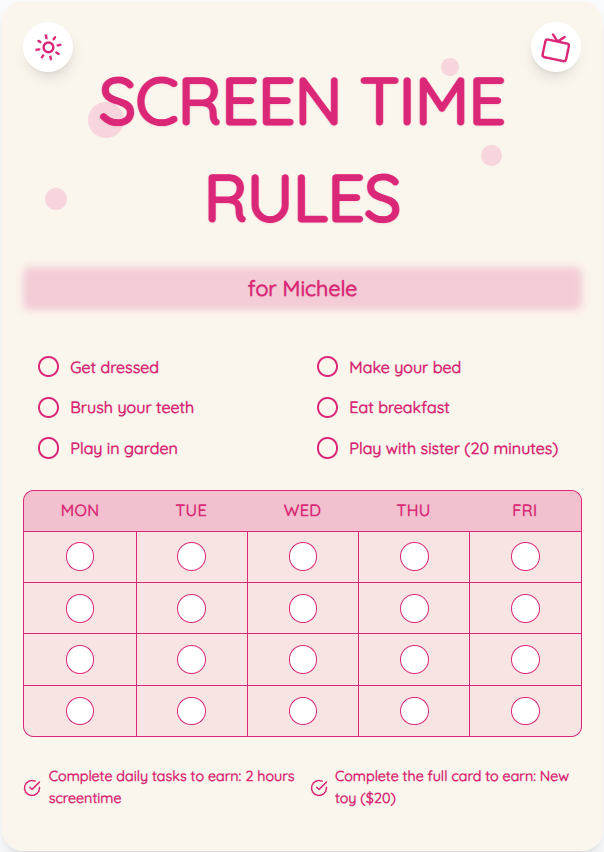Can Screen Time Cause Headaches in Children? Exploring the Connection
As a parent, you may wonder if excessive screen time could be leading to your child's headaches. In this comprehensive guide, we delve into the impact of screen time on children's health, specifically focusing on whether screen time can cause headaches.
See What Your Screen Time Chart Will Look Like
Here's an example of a beautiful, customizable screen time rules chart you can create for your family

Understanding Screen Time and Headaches
Screen time, especially prolonged exposure to digital devices, has been linked to various health issues in children. While the direct correlation between screen time and headaches is still debated, there are several factors that may contribute to this connection. Blue light emitted from screens, poor posture during device use, and excessive screen time leading to eye strain are all potential triggers for headaches in children.
Practical Tips to Manage Screen Time and Prevent Headaches
To mitigate the risk of screen time-induced headaches, it's essential for parents to implement healthy screen time habits. Encourage regular breaks during screen use, promote outdoor activities, ensure proper ergonomics when using devices, and consider using screen time charts to set limits effectively. By creating a balanced approach to screen time, parents can help reduce the likelihood of headaches in their children.
Put These Tips Into Action
Create a custom chart to implement these strategies with your child
Promoting Overall Well-being in Children
Beyond the immediate concern of headaches, excessive screen time can impact children's overall well-being. Encouraging physical activity, fostering real-world social interactions, and prioritizing quality family time are integral to a holistic approach in managing screen time. By addressing the root causes of excessive screen use, parents can promote healthier habits and better emotional well-being in their children.
Practical Tips for Success
- Encourage outdoor playtime to reduce screen exposure.
- Use a screen time chart to set clear limits on device usage.
- Implement a 'no screens before bedtime' rule to promote better sleep hygiene.
- Model healthy screen habits by limiting your own device use when around your children.
Frequently Asked Questions
How much screen time is too much for children?
The American Academy of Pediatrics recommends limiting screen time to 1 hour per day for children aged 2-5 and promoting consistent limits for older children.
Can blue light from screens really cause headaches?
While research is ongoing, exposure to blue light emitted from screens may contribute to eye strain and discomfort, potentially leading to headaches in some individuals.
What are the signs that my child is experiencing screen-induced headaches?
Symptoms may include head pain, eye strain, sensitivity to light, and difficulty focusing. If your child frequently experiences these symptoms after screen use, consult a healthcare provider.
By understanding the potential impact of screen time on children's health, you can take proactive steps to manage it effectively. Remember, moderation is key when it comes to screen time. Incorporating the tips provided and utilizing screen time charts can help create a healthy balance for your child's well-being.
Ready to Transform Your Family's Screen Time?
Join thousands of parents who have successfully managed screen time with our customizable charts.
